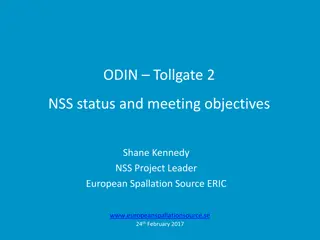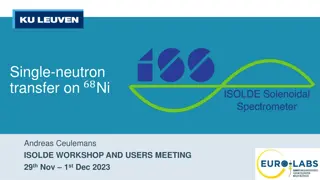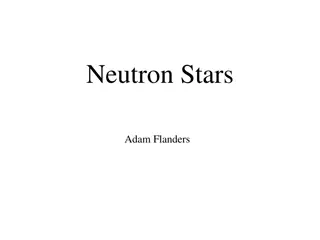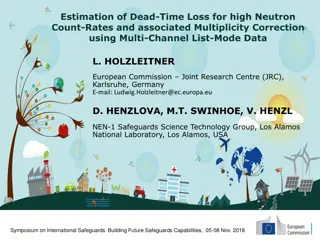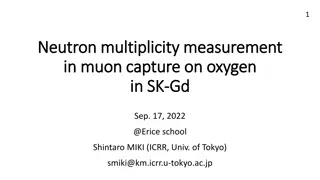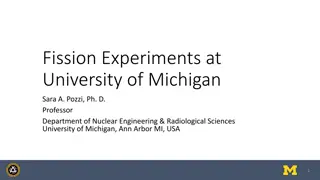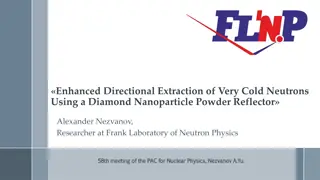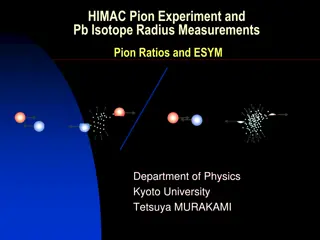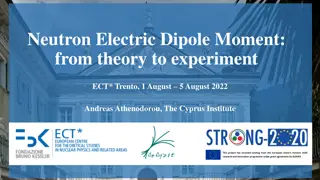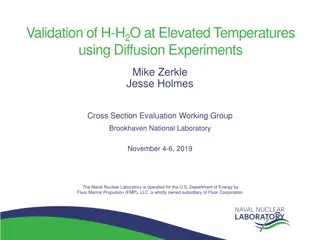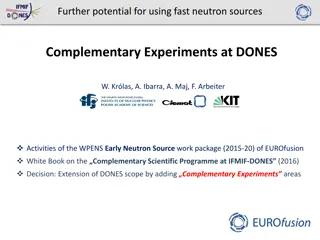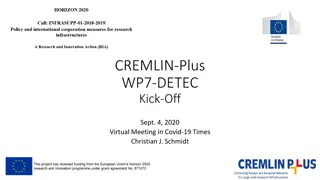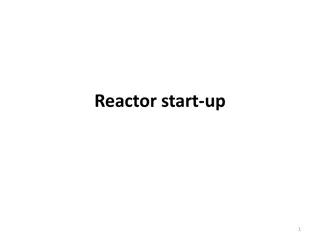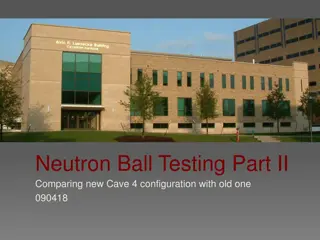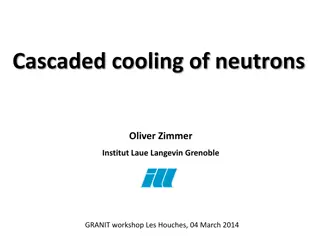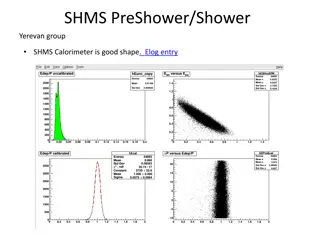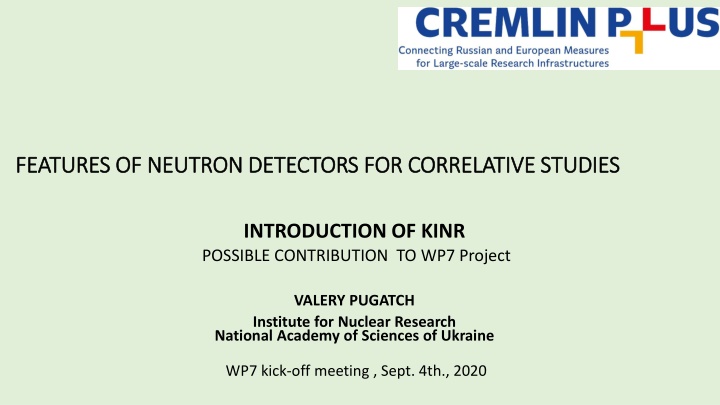
Neutron Detectors for Correlative Studies: Features and Applications
Discover the features and applications of neutron detectors for correlative studies in experimental setups, with a focus on low and medium energies. Explore sensor materials, sizes, signal transformation, noise reduction techniques, detection efficiency, and more.
Download Presentation

Please find below an Image/Link to download the presentation.
The content on the website is provided AS IS for your information and personal use only. It may not be sold, licensed, or shared on other websites without obtaining consent from the author. If you encounter any issues during the download, it is possible that the publisher has removed the file from their server.
You are allowed to download the files provided on this website for personal or commercial use, subject to the condition that they are used lawfully. All files are the property of their respective owners.
The content on the website is provided AS IS for your information and personal use only. It may not be sold, licensed, or shared on other websites without obtaining consent from the author.
E N D
Presentation Transcript
FEATURES FEATURES OF NEUTRON DETECTORS OF NEUTRON DETECTORS FOR FOR CORRELATIVE STUDIES CORRELATIVE STUDIES INTRODUCTION OF KINR POSSIBLE CONTRIBUTION TO WP7 Project VALERY PUGATCH Institute for Nuclear Research National Academy of Sciences of Ukraine WP7 kick-off meeting , Sept. 4th., 2020
Institute for Nuclear Research Institute for Nuclear Research National Academy of Sciences of Ukraine National Academy of Sciences of Ukraine (KYIV ,PROSPEKT NAUKI, 47) (KYIV ,PROSPEKT NAUKI, 47) 17 scientific departments in the following areas: nuclear physics, particle and high energy physics; nuclear energy; radiation physics and reactor materials science; plasma physics and plasma technologies, thermonuclear fusion; nuclear, radiation and technogenic-ecological safety. *** Neutron detectors are included into experimental setups. The most sophisticated setups were designed and built for correlative studies.
Institute for Nuclear Research Institute for Nuclear Research National Academy of Sciences of Ukraine National Academy of Sciences of Ukraine Experimental nuclear physics facilities: research nuclear reactor VVR-M with "hot" chambers, isochronous cyclotron U-240, electrostatic accelerator EGP-10K - tandem generator, cyclotron U-120, electron accelerator, , tritium laboratory;.j
FEATURES OF NEUTRON DETECTORS FOR CORRELATIVE STUDIES FEATURES OF NEUTRON DETECTORS FOR CORRELATIVE STUDIES Neutron detectors for correlative studies at low and medium energies are considered below . Examples of reactions studied (Tandem generator, both cyclotrons): Deuteron break-up , d + A -> n + p, Ed 2.5 - 40 MeV ( Neutron energies 1 38 MeV) Quasi-free knock-out p + A -> n + p + X , E ~ 40- 70 MeV
FEATURES OF NEUTRON DETECTORS FOR CORRELATIVE STUDIES FEATURES OF NEUTRON DETECTORS FOR CORRELATIVE STUDIES Features of the detector setup to be taken into account Sensor material and sizes: NE102, Stilbene, Anthratcene, Liquid Scintillator, etc., diameter 50 -150 mm, height -30-150 mm, distance to IP:1 -3 m Transformation of neutron hit into electrical signal scintillator + photomultiplier, rise time : 1 5 ns Reduction of the PM noise by coincident readout from two sides of a scintillator efficiency of detection: ~ 20 % quality of n-gamma discrimination, ~ 75 90 % Time of flight : 10 -100 ns, time resolution ~ 2 ns (using CFD) shielding and collimation, etc.,). Number of detectors in a setup : 3 -8
Summary KINR Team has an experience in design, building and characterization of neutron detector systems for correlative studies of nuclear reactions at low and medium energies. We should be happy to contribute into development of a novel neutron detectors in frames of WP7 Project. Thank you for your attention !

